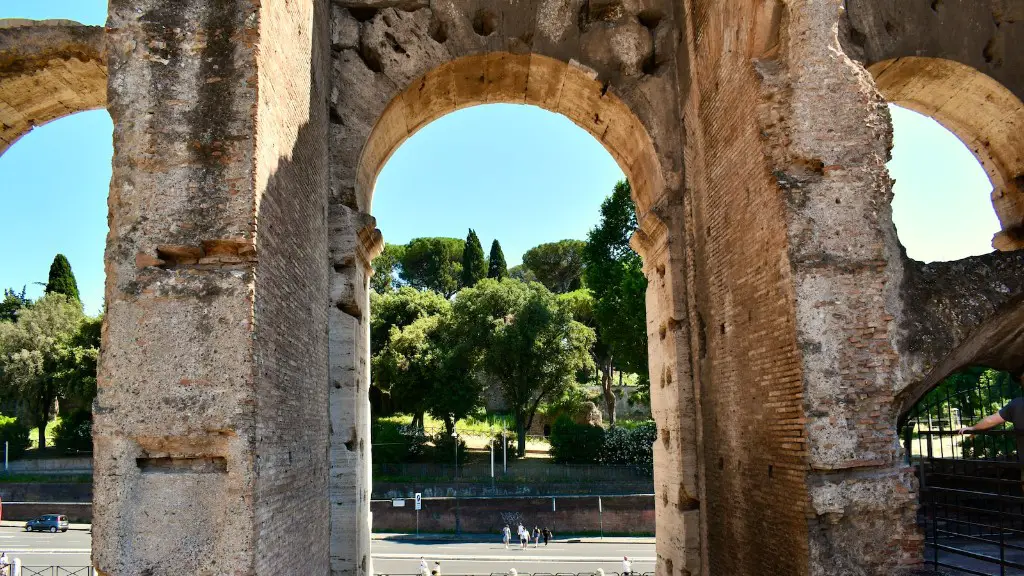Cosmetics in ancient Rome were thought to have been used in a somewhat similar way to how they are used today. The main differences were the materials used and the public places where people were allowed to wear them. Roman women would use white lead to whiten their skin, green copper oxide to create a greenish tinge, and red ochre for red lipstick. Blue and black were also occasionally used as eye-shadow. For blush, they would use a rouge made from crushed mulberries, almonds, or moth wings. One of the most common methods for mascara was to burn almonds and soot, and then apply the ash to the eyelashes.
There is evidence that the ancient Romans used a variety of methods to create makeup. One popular method was to use crushed minerals and apply them to the face with a damp cloth. Another method was to create a paste out of egg whites, ashes, and lead. This paste would be applied to the face and allowed to dry.
What did ancient Romans use for makeup?
There is no mention of ancient Roman women colouring their lips or using lipstick in terms of makeup. They had blush, eyeshadow (green or black), eyeliner (applied with a stick or needle made of either wood, glass, bone or ivory) though.
Kohl was a popular cosmetic product in ancient times, used to create a dramatic look for the eyes. It was made from a variety of substances, including clay, lead, ash, and burnt almonds. Early examples of kohl date back to 3100 BCE, and it was used by many different cultures, including those in North Africa, India, and the Middle East.
What was ancient makeup made of
The women of ancient Egypt used a variety of cosmetics to enhance their beauty. They rouged their lips and cheeks, stained their nails with henna, and lined their eyes and eyebrows heavily with kohl. Kohl was a dark-colored powder made from crushed antimony, burnt almonds, lead, oxidized copper, ochre, ash, malachite, and chrysocolla.
The ancient Romans were very concerned with their appearance and took great pains to stay looking young and fresh. They made various creams and lotions to hide wrinkles, pimples, sun spots, freckles and flaking skin. These masks were usually a mixture of lentils, barley, lupine, honey or fennel blended with oils, oregano seeds, sulphur, vinegar, goose grease, basil juice and hawthorn.
What is the oldest form of makeup?
The earliest historical record of makeup comes from the 1st Dynasty of Egypt (c 3100-2907 BC). Tombs from this era have revealed unguent jars, which in later periods were scented. Unguent was a substance extensively used by men and women to keep their skin hydrated and supple and to avoid wrinkles from the dry heat.
The Romans were onto something when they used alumen to halt foul odors! This main ingredient in many modern-day antiperspirants is still effective at keeping smells at bay. If you’re looking for a way to keep your armpits smelling fresh, try using a product that contains alumen.
How did Vikings make makeup?
Vikings used a type of eyeliner known as kohl which was a dark-colored powder made of crushed antimony, burnt almonds, lead, oxidized copper, ochre, ash, malachite and chrysocolla. It helped keep the harsh glare of the sun from damaging one’s eyesight while also increasing the dramatic sex appeal of the wearer.
Vikings were known to wear makeup, particularly kohl as eyeliner. There is also evidence that they would paint their faces in certain situations. It’s believed that both male and female Vikings wore makeup.
How did ancient Greeks do their makeup
The ancient Greeks were extremely knowledgeable about makeup and its various uses. One popular use for makeup was to darken the eyes, which was thought to make them more attractive. Many women would use eyeliner made with olive oil and charcoal to achieve this look. Another popular use for makeup was to create a thick brow, which was considered to be very stylish at that time.
In ancient Egypt, women would darken their eyebrows and lengthen their eyelashes with black kohl. For lipstick and rouge, they would use red ochre, a type of clay colored red by iron oxide. Cleopatra was known for her beauty, and it is said that she used these same products to enhance her looks.
Was ancient Egyptian makeup toxic?
The ancient Egyptians used lead-based makeup to prevent eye infections caused by particles in the Nile. The lead acted as a toxin, killing bacteria before it could spread. This prevented the spread of disease and saved many lives.
The material is called kohl and it is a type of eyeliner. It was used in ancient Egypt to protect the eyes from the sun and to make them look more beautiful.
What was the Roman ideal woman body
Ancient Romans believed that ideal beauty for a woman consisted of being slim but robust, having high round breasts, narrow shoulders, a small waist, wide hips and thighs, long hairless legs, rosy lips and cheeks. While wealthy women had the means to check off all these beauty ideals, poorer women were often judged solely on their ability to maintain a healthy and clear complexion.
The “Neumagen relief”, discovered near Trier, Germany, and thought to date from c.AD 200, depicts a Roman lady seated at a toilette attended by two servants. One servant holds a spray bottle, while the other uses a feather to apply perfume to her mistress’s hair. The lady’s coiffure is piled high in the “correct” Roman style, and she wears a voluminous garment known as a stola. Her head is turned to the left, so that her profile is shown in perfect outline.
The status of women in Roman society was very different from that of their counterparts in the ancient world. Roman women were expected to be chaste, faithful wives and mothers, and to stay out of public life. The ideal Roman woman was strong, virtuous and self-controlled.
The relief shows us that even in the privacy of their own homes, Roman women were attended by servants who helped them to maintain their grooming and appearance. This was in keeping with the Roman ideal of a woman’s role as a support to her husband and as the custodian of the household.
How did ancient Romans make themselves look beautiful?
The Romans had a very specific standard of beauty and they were not afraid to go to strange lengths to achieve it. Wrinkles, freckles, sunspots, skin flakes and blemishes were all considered to be very unattractive and so they went to great lengths to try and get rid of them. Swans’ fat, asses’ milk, gum Arabic and bean-meal were all used to try and soften wrinkles, while the ashes of snails were used to treat sores and freckles.
Makeup has been around for centuries, and it wasn’t always seen as a “girls only” thing. Men have used makeup for centuries as well, in various ways. It wasn’t until the 1800s that makeup became more associated with women. Therefore, we should not forget that makeup is not just for women, but for everyone.
Conclusion
The ancient Romans used a variety of ingredients to make their makeup, including leeches, soot, and ivory. They would grind these ingredients into a paste and then apply them to their skin.
The ancient Romans used a variety of materials to create makeup. They gathered minerals from the earth and used them to produce a variety of colors. They also made use of plants and insects to create dyes and other materials.





